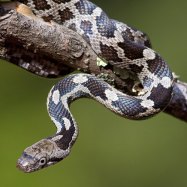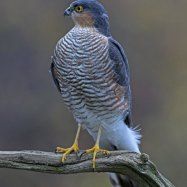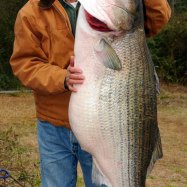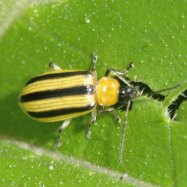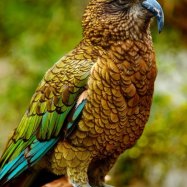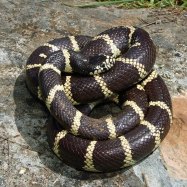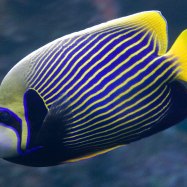
Crab
0.4 inches to 12 feet
Discover the fascinating world of crabs, from the tiny 0.4-inch pea crab to the massive Japanese spider crab measuring up to 12 feet! These creatures can be found along coastlines, estuaries, and coral reefs, showcasing their uniquely compact and flat body shape. With a variety of families to explore, there is always something new to learn about these captivating animals. #Animals #Crabs #Coastlines #CoralReefs #Estuaries
Animal Details Summary:
Common Name: Crab
Kingdom: Animalia
Habitat: Marine
The Fascinating World of Crabs: From the Oceans to Your Plate
When someone says crab, the first thing that may come to mind is a delicious seafood dish. However, these fascinating creatures are much more than a culinary delicacy. They belong to the expansive animal kingdom and have a complex, diverse biology that is worth exploring. Let's delve into the world of crabs – from their scientific classification to their habitat, feeding habits, and more Crab.The Basics: Scientific Classification of Crabs
Scientifically known as Brachyura, crabs are a type of crustacean belonging to the phylum Arthropoda. This means they have a hard exoskeleton, segmented legs, and a pair of claws. The class Malacostraca includes shrimps, lobsters, and crayfish, among others. Most crabs are part of the order Decapoda, meaning they have ten legs in total, with a pair of claws attached to their front legs. However, not all crabs have ten legs; some have reduced legs or can even have more than ten.Fascinating Varieties and Their Habitat
With over 7,000 species, crabs are one of the most diverse groups of crustaceans. From the minute pea crab, measuring 0.4 inches, to the giant Japanese spider crab, reaching up to 12 feet – the range in size and shape is astonishing. Crabs can be found in oceans worldwide, from the shallows to the deep sea, and even in freshwater habitats Campine Chicken. They are also versatile creatures, adapting to various environments, with some even living on land.Feeding: Omnivores of the Sea
Crabs have a diverse diet, being classified as omnivorous. They feed on a range of organisms, such as bacteria, algae, worms, mollusks, and even other crabs. Some crabs are known to sift through sand to find food while others actively hunt or scavenge. For example, the blue crab, a popular seafood dish, feeds on both live prey and dead animals. They have powerful claws, which they use to crush shells and access their food.The Wonder of Adaptations
One of the most remarkable features of crabs is their unique adaptations to their environment. Some species have developed camouflage, blending in with their surroundings for defense or hunting purposes. Others have developed powerful claws for protection and to break through their hard-shelled prey. Some crabs have specialized appendages for cleaning, catching, or even hiding food.A Haven for Seafood Lovers
Crabs play a significant role in the ocean's food chain, providing a valuable source of nutrients for other marine creatures. But they also play a significant role in the global seafood industry, being consumed by humans as a delicacy. China is the top producer of crabs, followed by Indonesia, the Philippines, and the United States. Crabs are a popular ingredient in many cuisines, from garlic-infused crabs in Sri Lanka to lobsters and crabs cooked in a coconut curry in Malaysia. In some cultures, crabs are considered a symbol of prosperity and are a must-have during special occasions and celebrations.From Ocean to Plate: A Sustainable Approach
While crabs may seem plentiful in the ocean, the reality is that overfishing, illegal harvesting, and bycatch are affecting their populations worldwide. This is of particular concern for vulnerable species such as the giant spider crab and the king crab. Therefore, it is crucial to follow sustainable fishing practices and choose seafood products from ethical sources to prevent the depletion of crab populations.Exploring the World of Crabs: A Natural Wonder
Crabs are truly remarkable creatures, with their diverse species, unique adaptations, and significant role in the marine ecosystem. From their humble beginnings as tiny larvae to their adult form, crabs undergo several stages of development and molting. They are also fascinating to observe in their natural habitat, with their swift movements and impressive display of their powerful claws. With their widespread distribution and culinary appeal, it is no wonder that crabs have captured the attention of humans for centuries.Fascinating Facts About Crabs
- Not all crabs have ten legs. Some have only six, while others can have more than ten.- The horseshoe crab is not a true crab; it belongs to another class of arthropods called Merostomata.
- Crabs are often believed to walk sideways due to the anatomy of their legs. However, they can also run forward but prefer to move sideways as it helps them navigate and escape predators.
- Crabs have compound eyes, allowing them to see a 360-degree view.
- Crabs keep growing throughout their lives, and they must shed their old exoskeleton to make room for growth. The process of shedding the exoskeleton is called molting.
- Crabs use traditional landmarks and chemical signals to communicate with each other and locate their food.
In a Nutshell
Crabs may be best known for their gastronomical appeal, but they are much more than just a tasty meal. From their scientific classification and unique adaptations to their diverse species and habitat, crabs are fascinating creatures. To enjoy these esteemed delicacies sustainably, it is crucial to choose seafood from ethical sources and support efforts to conserve their populations. With their versatile skills, intricate anatomy, and mesmerizing movements, crabs are indeed one of the natural wonders of our world.
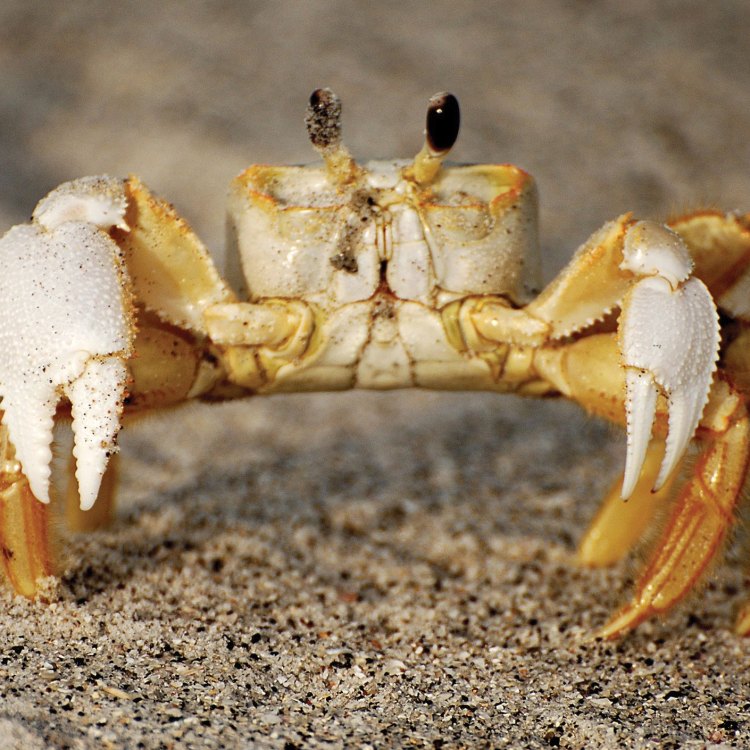
Crab
Animal Details Crab - Scientific Name: Brachyura
- Category: Animals C
- Scientific Name: Brachyura
- Common Name: Crab
- Kingdom: Animalia
- Phylum: Arthropoda
- Class: Malacostraca
- Order: Decapoda
- Family: Varies
- Habitat: Marine
- Feeding Method: Omnivorous
- Geographical Distribution: Oceans worldwide
- Country of Origin: Varies
- Location: Coastlines, estuaries, and coral reefs
- Animal Coloration: Varies
- Body Shape: Compact and flat
- Length: 0.4 inches to 12 feet
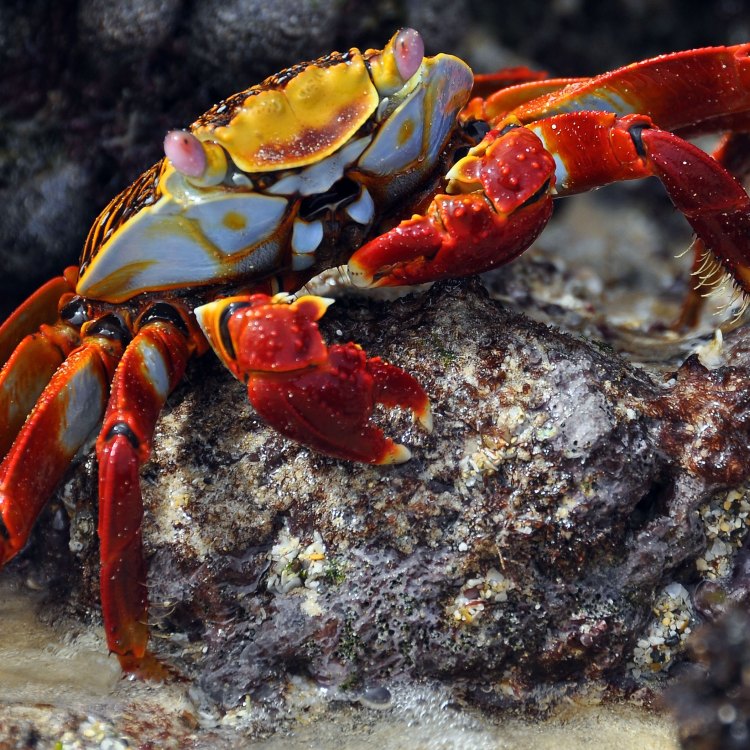
Crab
- Adult Size: Varies
- Average Lifespan: 1-100 years
- Reproduction: Sexual
- Reproductive Behavior: Varies
- Sound or Call: Varies
- Migration Pattern: Varies
- Social Groups: Varies
- Behavior: Varies
- Threats: Habitat destruction, pollution, overfishing
- Conservation Status: Varies
- Impact on Ecosystem: Important role in marine ecosystems
- Human Use: Food source, research
- Distinctive Features: Claws, hard exoskeleton
- Interesting Facts: Crabs can regenerate lost limbs
- Predator: Varies
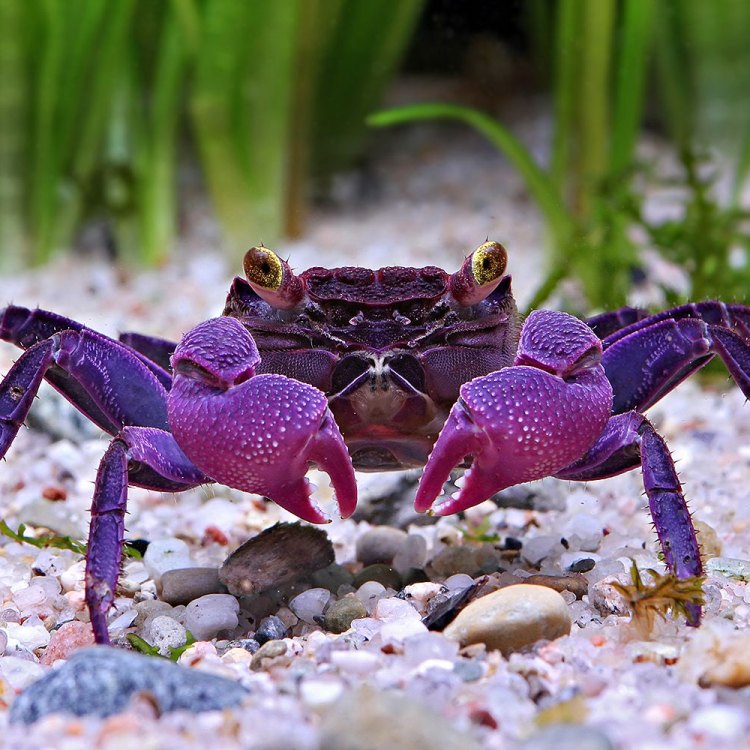
Brachyura
The Amazing World of Crabs: Discovering the Fascinating Facts
Crabs are one of the most fascinating and unique creatures found in the world's oceans, beaches, and even freshwater bodies. They belong to the phylum Arthropoda, which means "jointed legs," and have been around for millions of years. With over 8500 known species, crabs come in various sizes, shapes, and colors, making them a diverse group of crustaceans.These ten-legged crustaceans have captured the hearts and minds of humans for centuries, whether it be for their delicious taste or their unique characteristics PeaceOfAnimals.Com. In this article, we will delve into the amazing world of crabs and discover the fascinating facts about these incredible creatures.
The Anatomy of Crabs
Crabs are characterized by their hard exoskeleton, which protects their soft inner body from predators. The exoskeleton is made up of chitin, a tough and elastic material that is also found in the shells of other crustaceans. However, unlike other crustaceans, crabs have a sideways walking motion due to the way their legs are attached to their bodies.
Another distinctive feature of crabs is their claws, which come in various shapes and sizes, depending on their species. The front two claws are usually larger and are used for grasping and defense, while the other eight legs are used for walking and capturing food.
The Crab Life Cycle
Like all living organisms, crabs also have a life cycle that begins with reproduction. However, the reproduction process of crabs is quite different from other animals. Unlike mammals, crabs use sexual reproduction, where the female crab releases eggs, and the male crab fertilizes them externally Common Toad.
After fertilization, the female crab will carry the fertilized eggs in a mass attached to her abdomen until they hatch. The time it takes for the eggs to hatch varies depending on the species, and can range from a few days to several months.
Once the eggs hatch, the crab larvae will go through several stages of development before becoming an adult. This process can take anywhere from a few weeks to a few years, depending on the species and environmental conditions. Most species of crabs have a lifespan of 1 to 100 years, but some can live even longer.
Behavior and Social Groups
Crabs are not known for their social behaviors, and most species are solitary creatures. However, some species, such as hermit crabs, tend to form groups for protection and survival. These social groups are usually temporary and can change depending on the availability of resources and predators.
The behavior of crabs also varies depending on their species and habitat. Some crabs are burrowers, living in the sand or mud, while others are swimmers, living in the water column. The different behaviors of crabs also play a crucial role in maintaining the balance of their ecosystems.
Migration and Communication
Crabs are not known for their long-distance migrations, but some species do migrate within their habitats. For example, some crabs move from shallow waters to deeper waters, while others move towards the shore during mating season. These migrations often occur at night to protect the crabs from predators and to conserve energy.
Unlike other animals, crabs do not have a specific means of communication. However, some species use sound or vibration to attract mates or ward off predators. These sounds are produced by rubbing their body parts together, and each species has its unique sound or call.
The Enemies of Crabs
Despite their hard exoskeleton, crabs have numerous predators in their natural habitats. Some of their main predators include large fish, birds, octopuses, and even other crabs. To protect themselves, crabs have evolved various defense mechanisms, such as their sharp claws, camouflage, and the ability to detach and regenerate their limbs.
However, the biggest threat to crabs comes from human activities. Habitat destruction, pollution, and overfishing have significantly reduced the population of many crab species. These destructive activities have a devastating impact on the delicate balance of marine ecosystems that crabs play a crucial role in.
The Importance of Crabs in Ecosystems
Crabs are an essential component of marine ecosystems, as they play a vital role in maintaining the balance of their habitats. They help to control the populations of other marine organisms by feeding on them, and they also serve as prey for larger predators. Their constant burrowing in the sand also helps to aerate the sediment and promote the growth of seagrasses.
Additionally, crabs also play a significant role in nutrient cycling, as their exoskeletons and droppings are important sources of food for other marine organisms. Therefore, the decline of crab populations can have a ripple effect on the entire ecosystem, ultimately affecting human livelihoods as well.
Crabs and Human Interactions
Humans have had a long history of interactions with crabs, both as a source of food and in research. Crab meat is considered a delicacy in many cultures and is a popular dish around the world. Harvesting crabs for food has become a lucrative industry, with millions of tons of crabs caught each year.
However, with the increase in demand for crab meat, overfishing has become a significant threat to the survival of many crab species. This has prompted the development of sustainable fishing practices and conservation efforts to ensure the survival of these amazing creatures for future generations.
The Fascinating Facts about Crabs
Apart from their distinct anatomy and behavior, there are many other fascinating facts about crabs that are sure to surprise you. For example, did you know that crabs have the ability to regenerate lost limbs? This unique ability allows them to regrow their lost claws or legs, making them one of the few animals with this superpower.
Another interesting fact is that some species of crabs use their shells to communicate with other crabs. They produce vibrations by drumming their claws on their shells, which can be heard and understood by other crabs. This helps them to locate potential mates, establish territories, and warn others of danger.
One of the most bizarre facts about crabs is their tendency to molt, or shed their exoskeleton as they grow. During this process, the crab will emerge from its old shell, which has become too small, and wait for its new exoskeleton to harden. This often leaves crabs vulnerable to predators and can be a dangerous time for them.
The Conservation Status of Crabs
The conservation status of crabs varies depending on their species, habitat, and region. Some species, like the blue crab, are classified as vulnerable due to overfishing and habitat destruction. Others, like the ghost crab, are listed as least concern. The conservation efforts for crabs mainly focus on implementing sustainable fishing practices, habitat preservation, and educating the public about the importance of these creatures in ecosystems.
Exploring the Fascinating World of Crabs
In conclusion, crabs are truly fascinating creatures with a rich history, unique features, and important roles in marine ecosystems. From their distinctive claws and exoskeleton to their different behaviors and fascinating facts, there is always something new to discover about these amazing creatures. It is our responsibility to protect and preserve their habitats to ensure their survival for generations to come. So, the next time you spot a crab at the beach or on your plate, take a moment to appreciate the wonders of the amazing world of crabs.
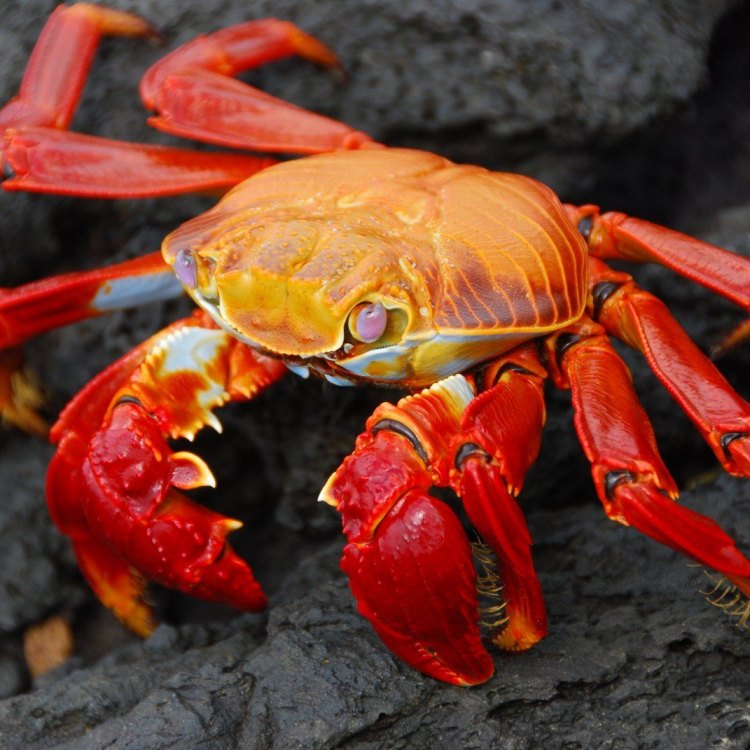
The Fascinating World of Crabs: From the Oceans to Your Plate
Disclaimer: The content provided is for informational purposes only. We cannot guarantee the accuracy of the information on this page 100%. All information provided here may change without prior notice.


